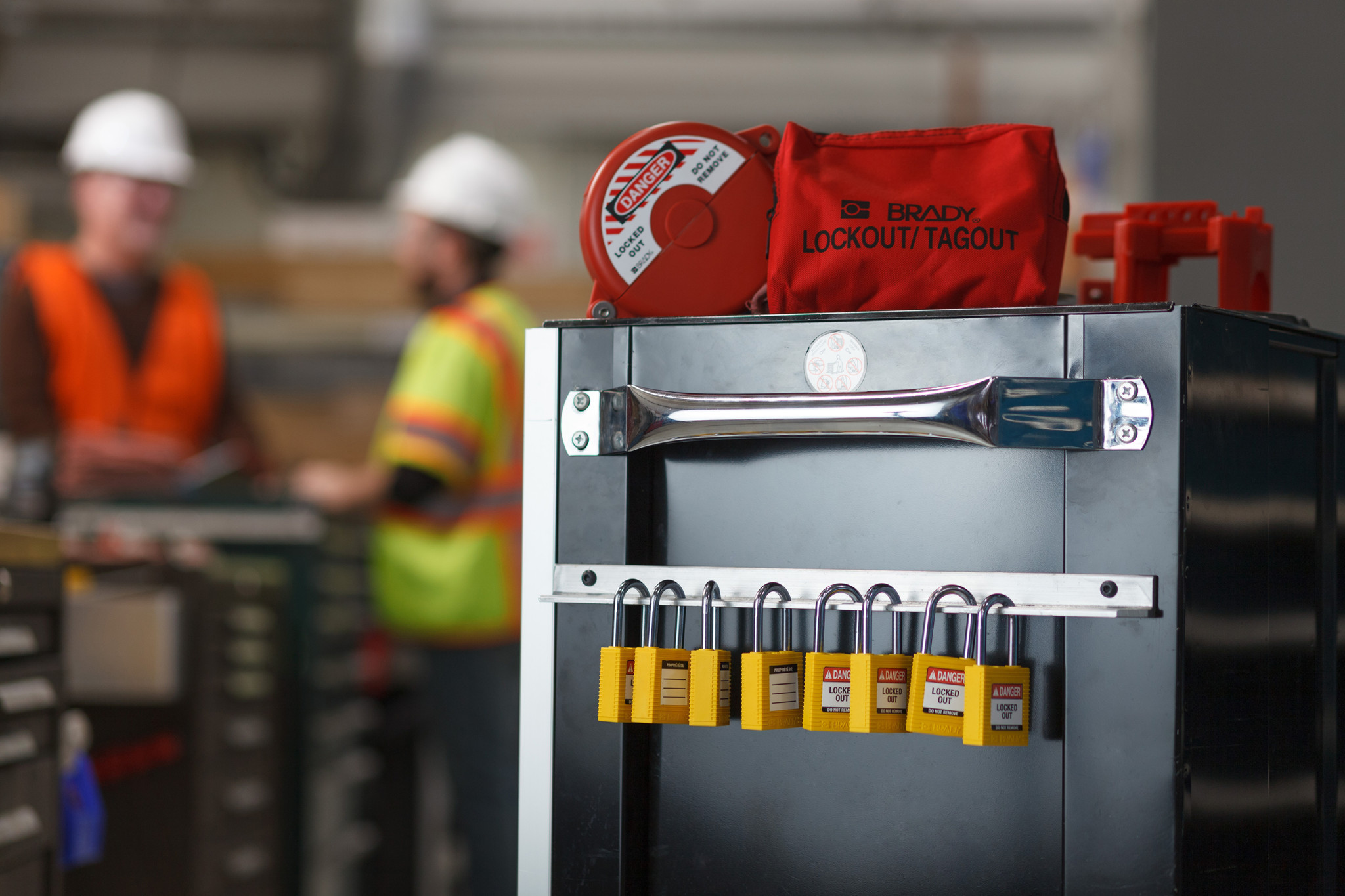OSHA 1910.147 and the European Machinery Directive 2006/42/EC
- Posted on
- Posted in 1910.147, 2006/42/ec, Brady, Lockout-Tagout, OSHA, padlock
- 0

Scope
America and Europe have each created their own guidelines for handling and working with machinery and managing hazardous energy. In America, the Occupation Safety and Health Organization (OSHA) has created minimum performance standards, OSHA 1910.147, for managing hazardous energy using Lockout-Tagout- devices to keep a machine or similar equipment cut off from an energy source. For Europe the European Union has set a similar standard that all of the member states should follow, European Machinery Directive (2006/42/EC). Their directive aims at the protection of workers and consumers using machinery using identifiable protective devices.
The protective devices
OSHA stated some requirements for Lockout-Tagout devices: locks, tags, chains, wedges, key blocks, adapter pins, and self-locking fasteners. They need to be durable, substantial (they should not be able to accidentally get removed), identifiable (warn against hazardous conditions), they need periodic inspection (at least annually by an authorized employee), and an employer should provide training on the Lockout-Tagout devices and procedures to the employees. Lockout-Tagout may only be practiced by authorized personnel. Lockout- and tagout devices shall be singularly identified.
The European Commission has also set some requirements for guards and protective devices. These protective devices must be of robust construction, be able to be securely held in place, and must not give rise to any additional hazard. Protective devices should also not be easily bypassed, located at an adequate distance from the danger zone, and cause minimum obstruction to the view of the production process. Last, the protective devices must allow for essential work on the installation and/or replacement of tools, as well as for maintenance purposes, by restricting access to the area where the work must be done, if possible without removing the guard or disabling the protective device. A guard, a part of the machinery specifically used to provide protection by means of a physical barrier, can be fixed, interlocked movable, or adjustable restricting access.
Training and Authorized Personnel
OSHA requires employers need to establish an energy-control program. In which specific rules, and procedures for the controlling of hazardous energy are stated. The program must contain a specific statement of the intended use of the procedure, specific procedural steps for shutting down, isolating, blocking and securing machines or equipment to control hazardous energy, specific procedural steps for the placement, removal and transfer of lockout devices or tagout devices and the responsibility for them, further on the program must contain specific requirements for testing a machine or equipment to determine and verify the effectiveness of lockout devices, tagout devices, as well as other energy control measures.
The EC has not mentioned any particular training needed to operate protective devices. Neither does it compel employers to establish an energy control program.
Consequences of non-compliance
In order to protect your personnel from dangerous situations while servicing or working on machines or other equipment, you, as an employer and employee, must follow these standards. By using Lockout-Tagout multiple disastrous situations can be avoided.



















Comments
Be the first to comment...